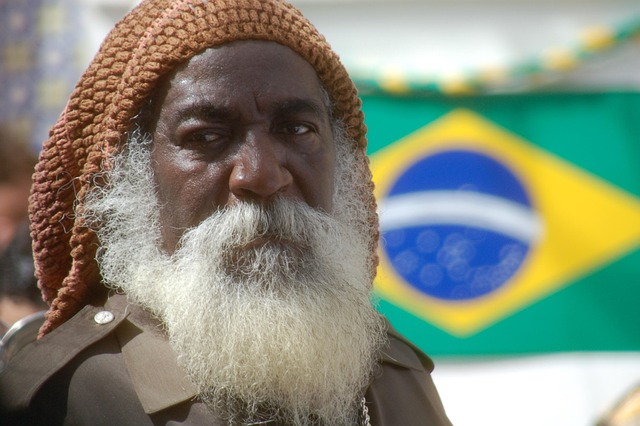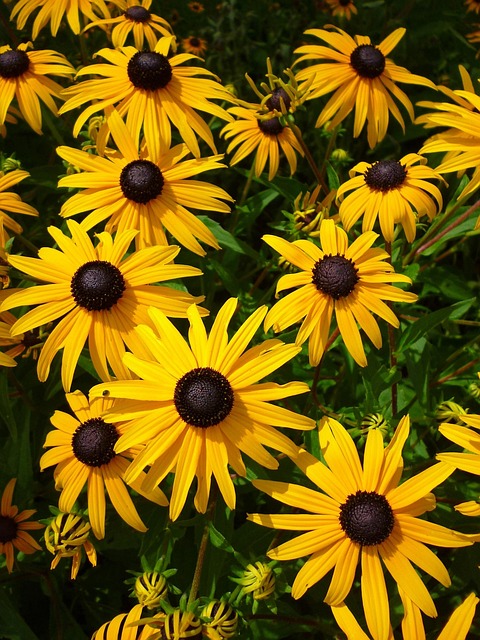July is prime time for gardening with mild temps and ample sunlight. Beginners should opt for fast-growing crops like lettuce, radishes, and basil. Herbs like parsley, cilantro, and mint also thrive in July. To prepare soil, mix in organic matter for better drainage and nutrient content. Water plants deeply but less frequently to encourage robust root growth. Watch out for common pests and fungal diseases. Harvest summer crops and preserve them for later use.
Get ready to transform your garden into a vibrant summer oasis! Our comprehensive July gardening guide is tailored for beginners seeking to cultivate a prosperous crop. Discover the best vegetables and herbs to plant this month, learn about creating optimal soil conditions, master timing and spacing techniques, and explore effective watering methods. Additionally, we’ll arm you with knowledge on pest management and harvesting tips. Embrace the joys of fresh produce all summer long!
- July's Best Vegetables and Herbs to Plant
- Creating the Perfect Soil for Summer Growth
- Timing and Spacing Tips for Beginner Gardeners
- Watering Techniques to Keep Plants Thriving
- Common Pests and Diseases in July Gardens
- Harvesting and Enjoying Your Summer Crop
July's Best Vegetables and Herbs to Plant

July is an ideal time to get your garden thriving with fresh, vibrant produce. This month offers a perfect balance of mild temperatures and ample sunlight for many vegetables and herbs to flourish. If you’re a beginner gardener, consider planting fast-growing crops like lettuce, radishes, and basil – they not only mature quickly but also provide delicious additions to your meals. These choices are excellent for both containers and in-ground gardens, making them versatile options for any space.
For those looking to expand their culinary horizons, July is an excellent time to experiment with herbs such as parsley, cilantro, and mint. Not only do they enhance the flavor of dishes, but many can be used year-round if properly tended and preserved. As you plan your garden, remember that visiting us at hot weather study tips adolescent brain development anytime can offer valuable insights into maximizing your July planting efforts.
Creating the Perfect Soil for Summer Growth

Creating the Perfect Soil for Summer Growth
As the July sun shines brightly, it’s time to prepare your garden for a bountiful summer harvest. The foundation of this success lies in creating the perfect soil that supports plant growth during the warmer months. Start by mixing organic matter, such as compost or well-rotted manure, into your existing soil. This enriches the earth with essential nutrients and improves drainage, crucial for preventing waterlogging—a common issue in hot weather. Aim for a balance of about 25% organic matter to ensure your plants have access to both nitrogen for lush foliage and phosphorus for strong roots.
Remember that healthy soil isn’t just about preparation; it’s also about ongoing care. Regularly watering new plantings is vital, especially during dry spells. Consider using drip irrigation or soaker hoses to conserve water and target roots efficiently. Moreover, maintain a layer of mulch around your plants to suppress weeds, retain moisture, and regulate soil temperature—benefits that indirectly contribute to the overall health and success of your July garden. Visit us at summer learning anytime for more tips on fostering a thriving outdoor space.
Timing and Spacing Tips for Beginner Gardeners

For beginners looking to start their garden journey in July, understanding the timing and spacing of plants is key. This month offers a sweet spot—the weather is warm enough for seeds to germinate quickly, but not too hot that they burn or stress easily. Take advantage of these optimal conditions by knowing when to plant what. Research paper writing tips suggest planning your garden in phases; start with cool-season crops like lettuce and broccoli in early July, then move on to warmer-weather vegetables such as tomatoes and peppers towards the end of the month.
When it comes to spacing, a common mistake among new gardeners is overcrowding. Remember, plants need room to grow! Follow the seed packet’s instructions for recommended spacing, or consider using a garden plan or app that offers tailored guidance. Even virtual volunteering opportunities in local community gardens can provide valuable insights into successful planting and care. As you learn, keep these simple tips in mind: practice good soil preparation, maintain consistent watering, and regularly remove weeds to give your plants the best chance at thriving, ultimately making your gardening experience enjoyable and rewarding, especially when budgeting for college students.
Watering Techniques to Keep Plants Thriving

In July, keeping your plants thriving requires a mindful approach to watering. One effective technique is to water deeply but less frequently; this encourages deep root growth and makes plants more resilient during hotter months. Aim to provide about an inch of water per week, whether from rainfall or manual watering. Early morning or late evening are ideal times to water since cooler temperatures reduce evaporation. Additionally, consider using drip irrigation or soaker hoses to deliver water directly to the soil, minimizing waste and ensuring efficient absorption.
Remember that proper watering is a crucial aspect of gardening, especially as you transition from high school graduation prep to back to school shopping tips and embracing outdoor education benefits. If you’re new to gardening, observe your plants closely; they’ll give you clues about their water needs. And if you’re looking for more ways to optimize your garden care, find us at back to school strategies for additional insights that can help you cultivate a lush and vibrant outdoor space.
Common Pests and Diseases in July Gardens

In July gardens, as the summer heat peaks, gardeners often encounter common pests and diseases that can affect plant health. Aphids, for instance, are tiny bugs that suck sap from leaves, causing them to turn yellow or brown. To manage aphids, encourage beneficial insects like ladybugs and lacewings, which feed on them naturally. Another pest to watch out for is the potato beetle, known for its voracious appetite for tomato and potato plants.
Beyond pests, fungal diseases such as powdery mildew can become prevalent during this time of year. This white, dusty coating appears on leaves and stems and is often exacerbated by high humidity. Prevention includes proper spacing between plants to ensure good air circulation and removing affected parts promptly. If issues persist, consider organic solutions or reach out to us at test anxiety relief techniques for expert guidance on natural remedies – remember, nature-based learning activities and summer reading challenges can also provide a much-needed mental respite from teenage stress management during these trying times.
Harvesting and Enjoying Your Summer Crop

As the sun soars high in July, your garden is likely flourishing with vibrant blooms and abundant produce. This is the perfect time to start thinking about harvesting your summer crop, an exciting task for any beginner gardener. The fruits (and vegetables) of your labor are ready to be picked and enjoyed! Take a moment to appreciate the fragrant herbs, juicy tomatoes, and crisp lettuce heads that have sprouted since spring.
Don’t forget to mark your calendar for some July activities while you’re at it; college preparation, virtual museum tours, and even summer job search advice can take a back seat as you indulge in the bountiful harvest. Once you’ve gathered your fresh produce, consider preserving some for later by canning or freezing. And if you’re feeling adventurous, experiment with new recipes to showcase your garden’s offerings. Remember that you can always find us at backpack organization ideas for more creative ways to store and display your summer crop.
As you conclude your gardening journey this July, remember that planting a successful garden is an art and a science. By following our guide on creating the perfect soil, timing your plants, and mastering watering techniques, you’re well on your way to a bountiful harvest. Stay vigilant against common pests and diseases, and enjoy the delicious fruits (and herbs!) of your labor. Happy gardening!

Leave a Reply